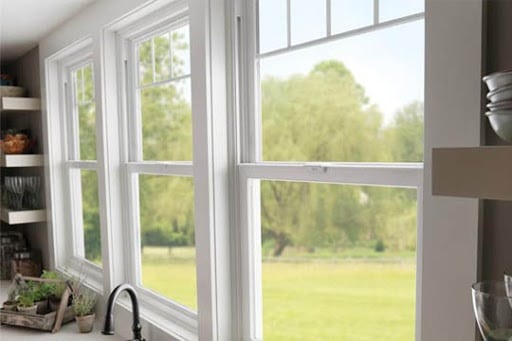Winter, the season where Mother Nature is at her most challenging and difficult. The darker nights, shorter days and the ever-falling temperatures make for some unpleasant conditions for your doors. Although we can get snug in our houses, turn up the heating, have some of the best comfort food and wrap up in warm jumpers, we almost always overlook one of our best defences against the cold, the humble front door.
Windows and doors North Wales can give advice on how to best make use of your front door, and it can even help to keep your home warmer over the cold months. Composite doors North Wales can make for an attractive door replacement due to their incredibly strong and durable nature.
Door Maintenance Tips
Your door isn’t just good for giving off a stylish first impression to visitors, or protecting you and your family from unwelcome guests but it can also play a key role in keeping your house warm and cosy through the bad weather conditions associated with the winter season.
Particularly at this time of year it is a good idea to check and inspect your front door – missing minor issues could mean a costly bill later on if they develop into worse problems. You could even be faced with higher energy bills or even needing to replace your front door entirely.
A front door’s first line of defence for increasing energy efficiency is draught-proofing. Fixing draught excluders at the bottom of your front door (or even your internal doors) is a simple, yet very effective way of keeping warm air in, and cold air out.
Common Problems
- Cracking
The colder temperatures outside mean that the beloved central heating is usually cranked up indoors, and this is a big problem that front doors have to tackle. Central heating systems result in a lower level of humidity within your home, the dry air sucks in any moisture and this includes the humidity which is stored within wooden doors or windows. Over time, this can cause the wood to contract, warp and even split. Whilst cracking isn’t as bad as warping, and it won’t necessarily affect your door’s functionality, it’s certainly detrimental to the doors appearance.
- Sticking
As the temperatures drop, timber or wood fibre doors will contract; and when the weather improves, they will expand. After a few seasons, this cycle of expansion and contraction can start to cause damage, such as causing changes to the shape and size of your doors. Most doors are made to fit specific door frames, so any warping will cause the door to stick. This soon becomes an obvious problem as the door will be difficult to open and shut properly.
If this problem goes unchecked, larger gaps will eventually develop which leads to the door sticking even more frequently. Eventually, this could lead to the hinges becoming loose and this then ends up with a damaged door.
How to Keep Your Doors in Good Shape
It doesn’t matter if we’re predicted a snowy Winter or not, a few simple window and door maintenance tips will help to keep your house warm no matter what.
- Check Hinges
Hinges can naturally work a little loose over time, so check them periodically to make sure they’re still attached securely. Tighten any loose hinges carefully, don’t over tighten though as this can cause further damage.
- Insulation
This is important with large sliding doors in particular; it’s critical to ensure that warm air isn’t being lost from inside your home. The installation of a draught excluding strip at the bottom of entry doors and sliding doors will improve insulation by creating a barrier that stops warm air escaping under the door.
- Sealing
Even if your door has been recently installed, it’s always a good idea to place sealing strips around the edges. Sealing strips don’t change the overall appearance of the door but will block any little gaps between the frame and the door, stopping cold air from getting in.
- Humidification
Central heating can lead to a very dry atmosphere inside the home, and this is a major contributing cause of damage to wood doors. A humidifier is a simple fix for this, as it will help to maintain the moisture in your home’s atmosphere at a suitable level.

